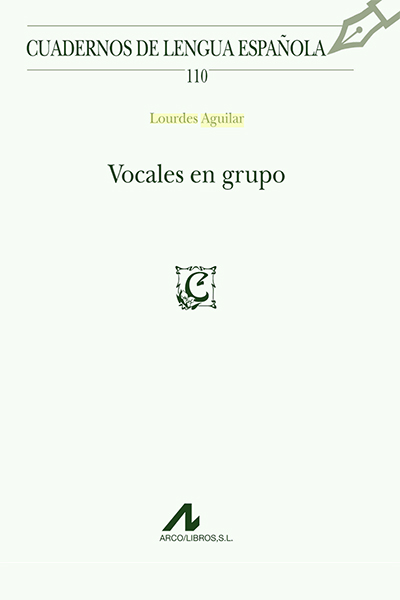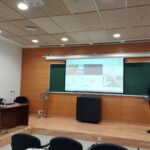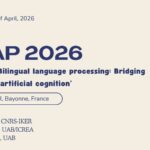20 gener, 2025
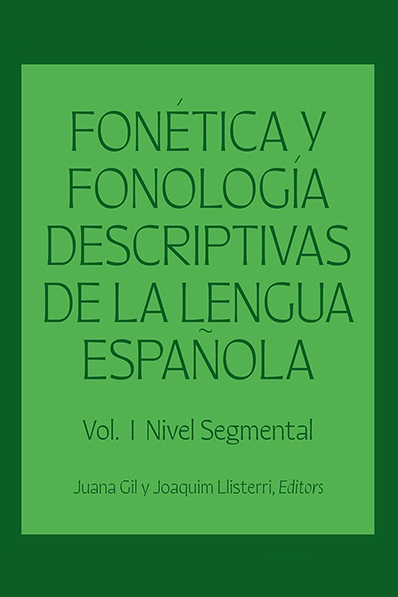
Autors:
Lourdes Aguilar, Juana Gil Fernández (coord.) & Joaquim Llisterri (coord.).
Títol:
Fonética i fonología descriptivas de la lengua españolaEditorial: Georgetown University Press
Data de publicació: 2024
Més informacióLa descripción más actualizada y completa del sistema fonético y fonológico de la lengua española.
Aunque se ha investigado mucho sobre fonética y fonología del español, hasta ahora no existía ninguna obra de referencia descriptiva exhaustiva y completa. Fonética y fonología descriptivas de la lengua española Volúmenes 1 y 2 es una obra de referencia exhaustiva, escrita en español, que describe la fonética y la fonología del español. Editado por Juana Gil Fernández y Joaquim Llisterri, este conjunto ofrece una visión de conjunto para comprender los temas segmentales y suprasegmentales de la fonología española, dejando claro lo que hace falta seguir investigando.
El conjunto internacional de colaboradores de esta referencia esencial presenta pruebas nunca antes analizadas, introduce nuevos conceptos teóricos y cuestiones no consideradas anteriormente, amplía el alcance de los estudios de casos y organiza sus numerosos subtemas, además de sugerir nuevos temas para futuras investigaciones. Este libro, una referencia descriptiva con abundantes figuras y tablas, es la clave de los supuestos del campo y una presentación de la investigación aceptada en la que se basan los futuros estudios. Con información de vanguardia sobre todos los temas relacionados con los sonidos del español, Fonética y fonología descriptivas de la lengua española será un valioso recurso para investigadores, estudiantes y estudiosos de la lingüística española que deseen profundizar en el conocimiento de las características fonéticas y fonológicas de todas las variedades de la lengua española.
19 juny, 2012
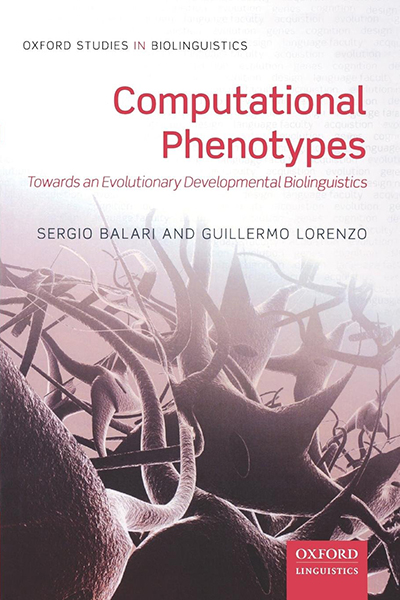
Autors:
Sergio Balari and Guillermo Lorenzo
Títol:
Computational Phenotypes: Towards an Evolutionary Developmental BiolinguisticsEditorial: Oxford University Press
Data de publicació: 2012
Pàgines: 256ISBN13: 9780199665464
Més informacióThis is a book about language as a species-typical trait of humans. Linguists customarily describe it as an extremely exceptional capacity, even when compared with the biological endowment of closely related species, and this is the source of the many quarrels that exist around the aim of explaining its evolutionary origins.
This book argues that language is not so exceptional after all, as according to the text it is just the human version of a rather common and conservative organic system that they refer to as the Central Computational Complex. The book argues that inter-specific variation of this organ is restricted to (i) accessible memory resources, and (ii) patterns of external connectivity, both being the result of perturbations in the system underlying its development. The book thus offers a fresh perspective on language as a naturally evolved phenomenon.
20 juny, 2015
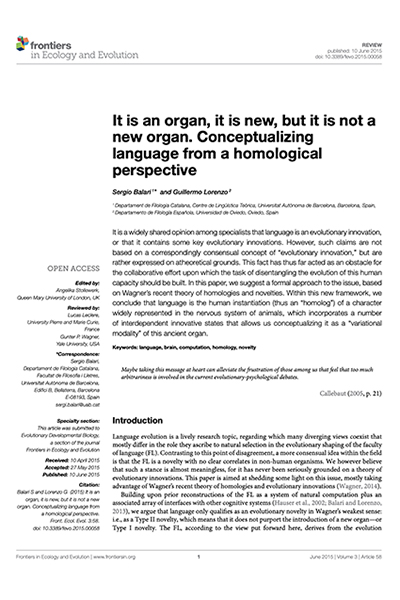
Autors:
Sergio Balari, Guillermo Lorenzo
Títol:
It is an organ, it is new, but it is not a new organ. Conceptualizing language from a homological perspectiveEditorial: Frontiers
Col·lecció: Frontiers in Ecology and Evolution #3Data de publicació: 2015
Pàgines: 18 Més informació
Text completIt is a widely shared opinion among specialists that language is an evolutionary innovation, or that it contains some key evolutionary innovations. However, such claims are not based on a correspondingly consensual concept of “evolutionary innovation,” but are rather expressed on atheoretical grounds. This fact has thus far acted as an obstacle for the collaborative effort upon which the task of disentangling the evolution of this human capacity should be built.
In this paper, we suggest a formal approach to the issue, based on Wagner's recent theory of homologies and novelties. Within this new framework, we conclude that language is the human instantiation (thus an “homolog”) of a character widely represented in the nervous system of animals, which incorporates a number of interdependent innovative states that allows us conceptualizing it as a “variational modality” of this ancient organ.
1 març, 2019
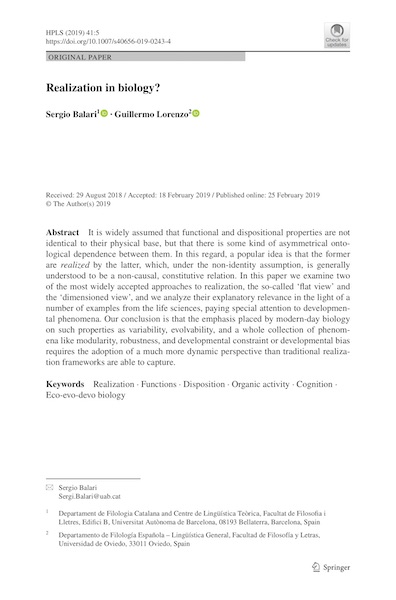
Autors:
Sergio Balari, Guillermo Lorenzo
Títol:
Realization in biology?Editorial: Springer
Col·lecció: History and Philosophy of the Life Sciences #41:5Data de publicació: 2019
Pàgines: 27 Més informació
Text completIt is widely assumed that functional and dispositional properties are not identical to their physical base, but that there is some kind of asymmetrical ontological dependence between them. In this regard, a popular idea is that the former are realized by the latter, which, under the non-identity assumption, is generally understood to be a non-causal, constitutive relation. In this paper we examine two of the most widely accepted approaches to realization, the so-called ‘flat view’ and the ‘dimensioned view’, and we analyze their explanatory relevance in the light of a number of examples from the life sciences, paying special attention to developmental phenomena. Our conclusion is that the emphasis placed by modern-day biology on such properties as variability, evolvability, and a whole collection of phenomena like modularity, robustness, and developmental constraint or developmental bias requires the adoption of a much more dynamic perspective than traditional realization frameworks are able to capture.
